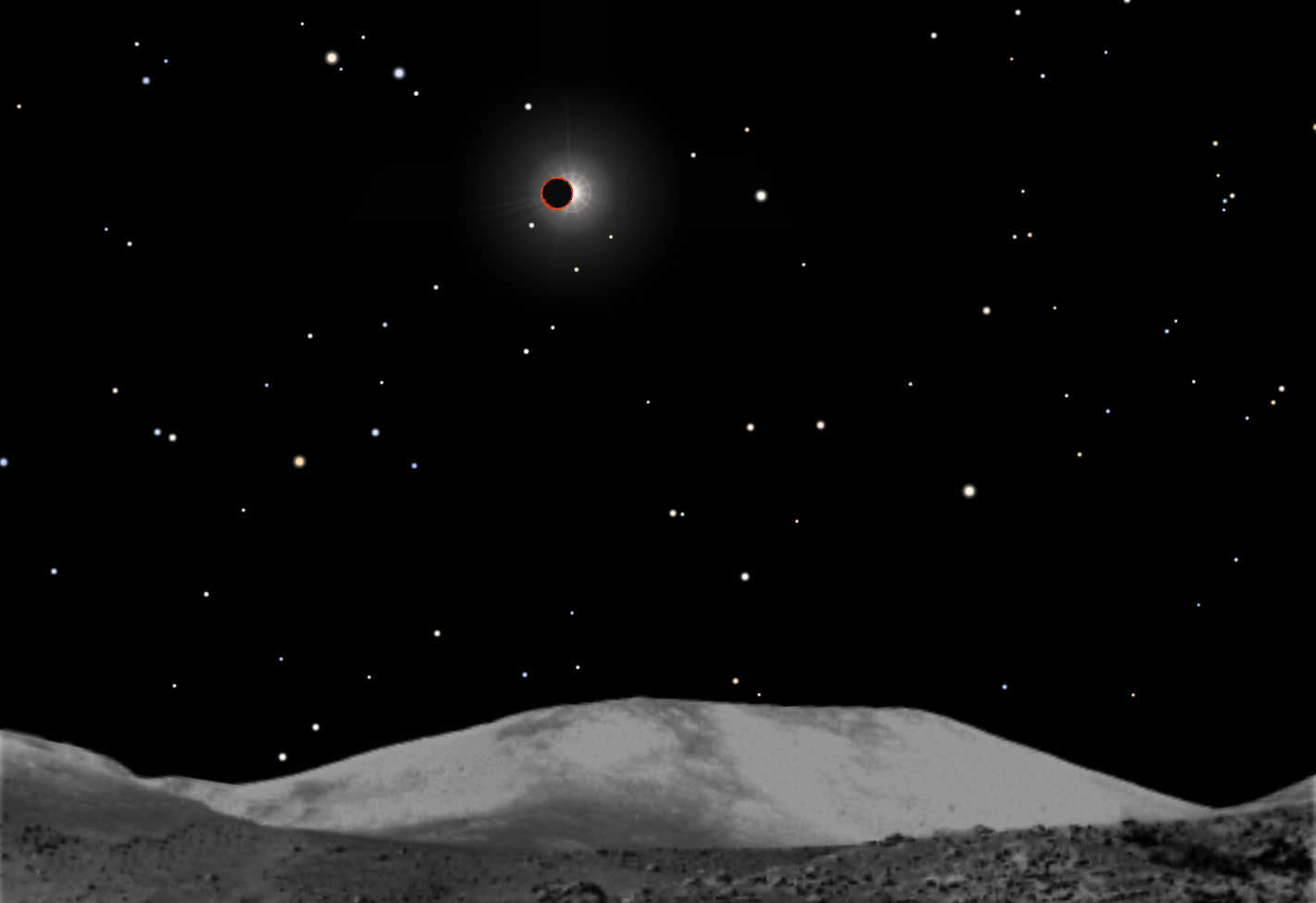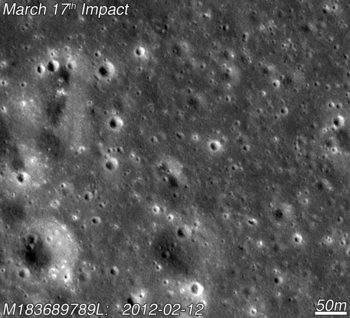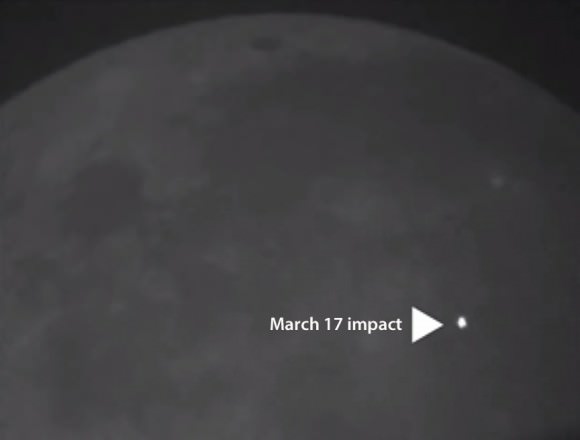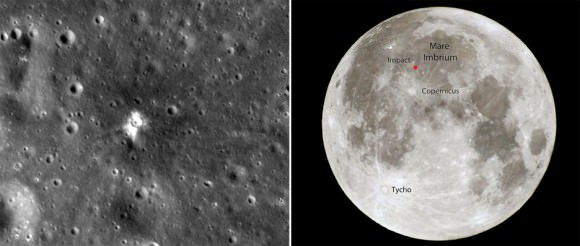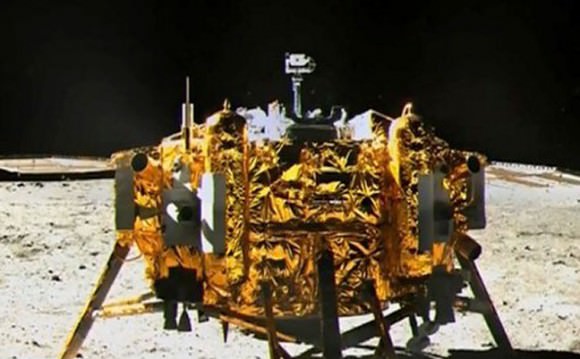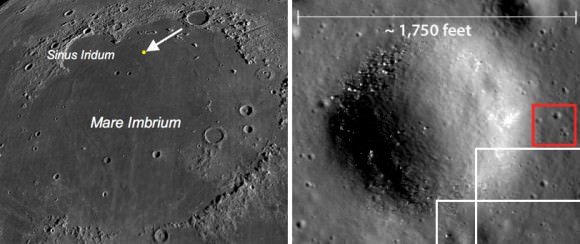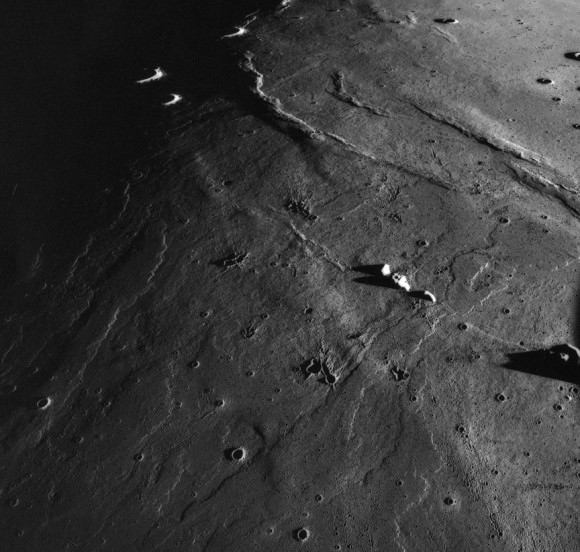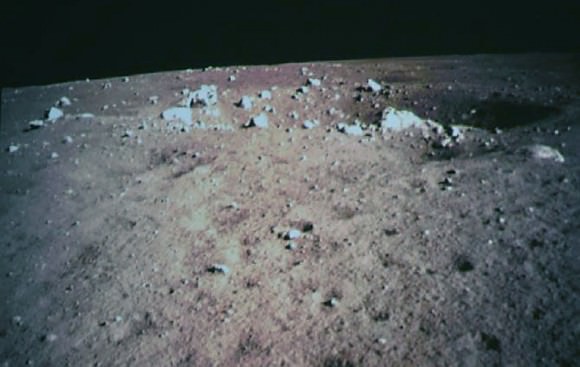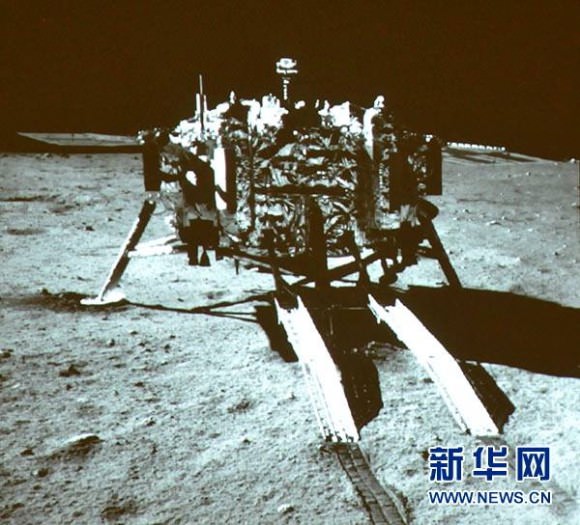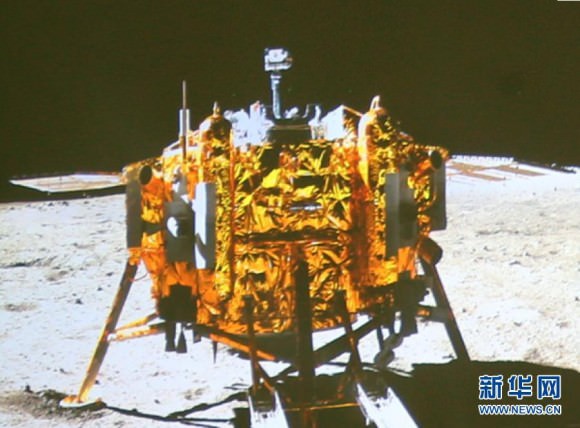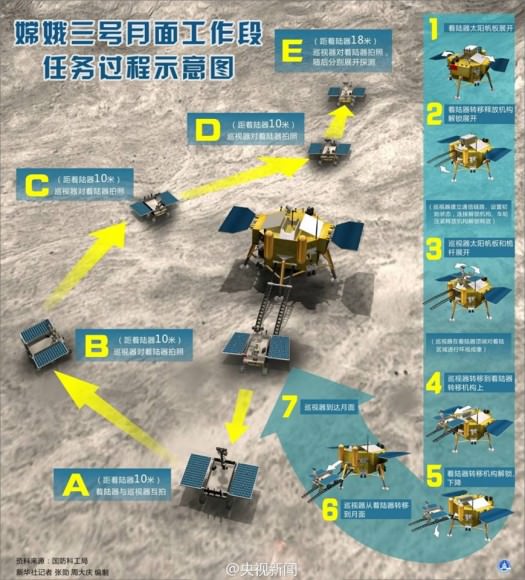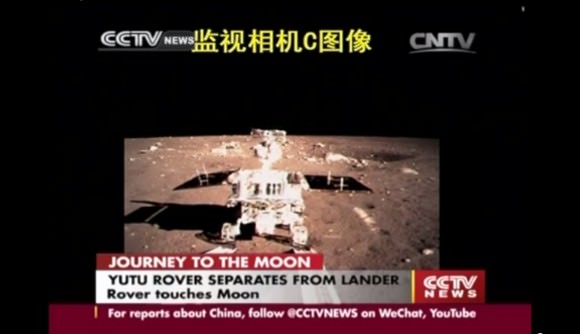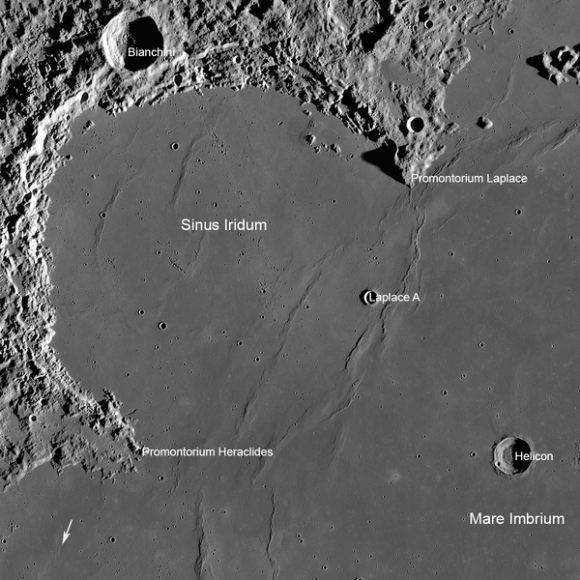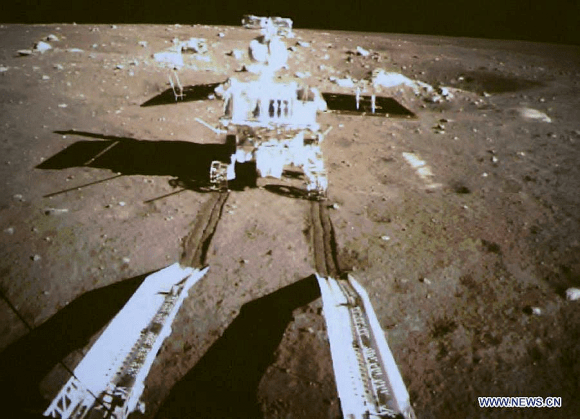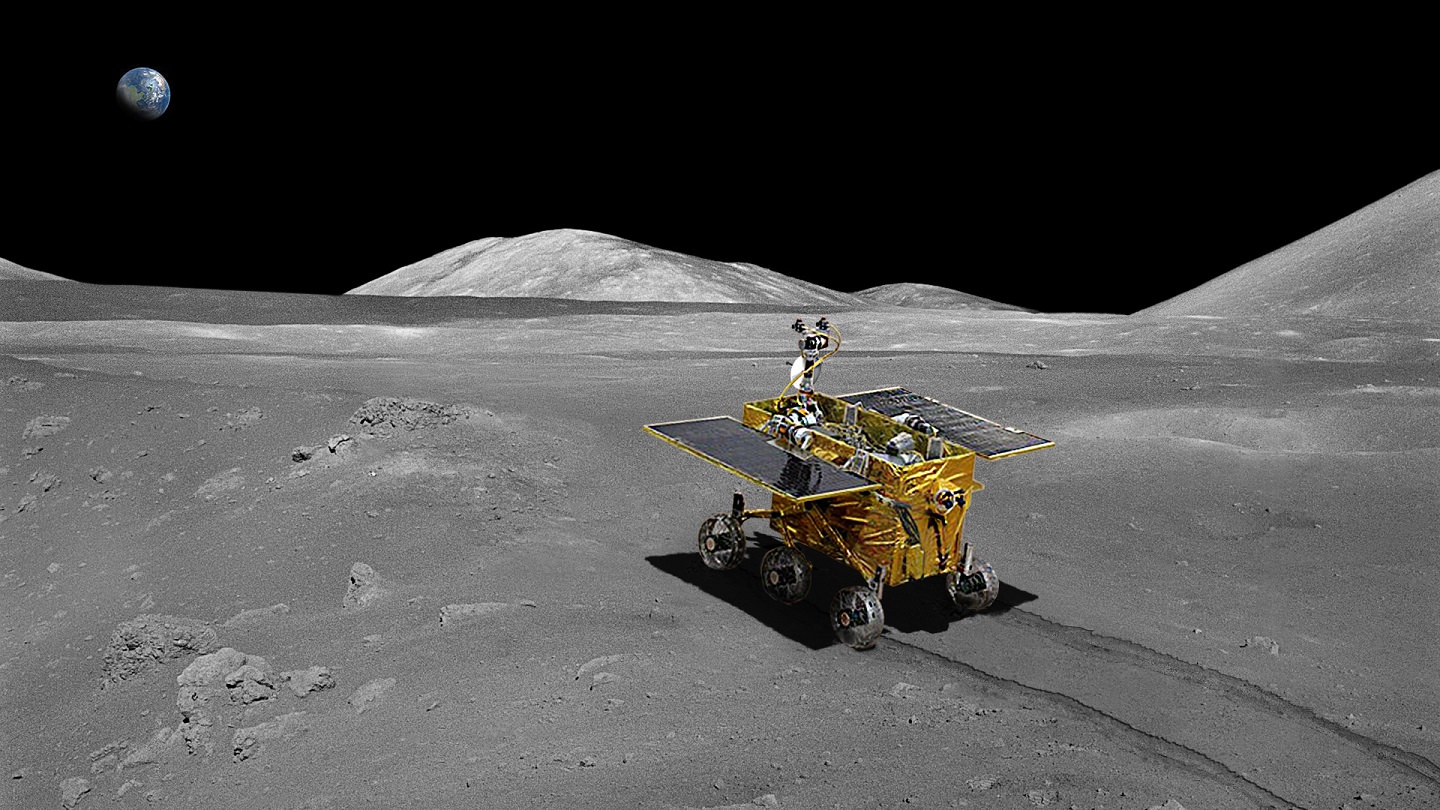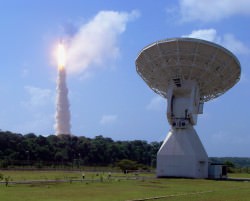Last night I used my telescope to eye-hike the volcanic plains of the Sea of Rains (Mare Imbrium) where the Yutu rover and lander sit beneath a blistering sun. With no atmosphere to speak of and days that last two weeks, noontime temperatures can hit 250 degrees Fahrenheit (122 C) . That’s hot enough that mission control at the Beijing Aerospace Command and Control Center has decided to draw the shades and give the rover a nap from science duties until December 23 when things cool down a bit.
While studying the subtle gray hues of the Imbrium lava flows I got to wondering what the sky might look like if I could don a spacesuit and visit the landing site “where the skies are not cloudy all day” (to quote a famous song). With no atmosphere to speak of, stargazing can be done both day and night on the moon though I suspect it’s better at night when there’s less glare from your surroundings. Night, defined as the time from sunset to sunrise (no twilights here), lasts about 14.5 Earth days. Days are equally long.
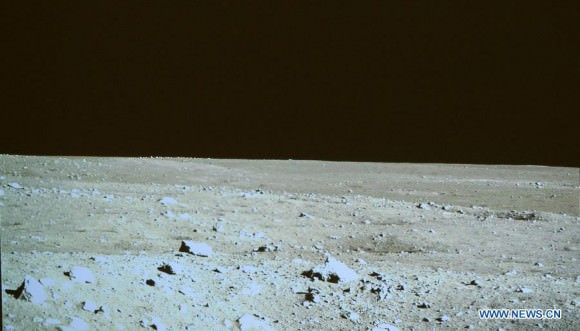
From Yutu’s point of view, it’s very nearly lunar noon today (Dec. 19) with the sun halfway up in the southern sky. Looking at the map of the sky from the lander’s location, you’ll see a few familiar constellations and one very familiar planet – Earth!
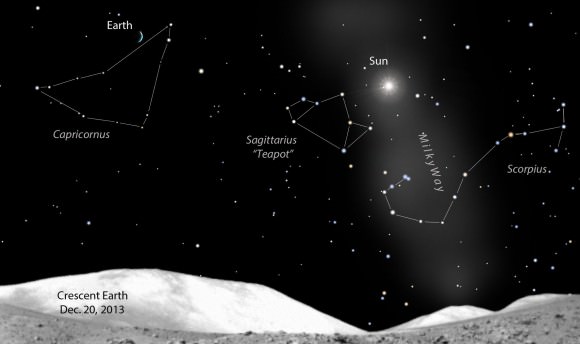
Today Earth appears as a very thin crescent a short distance to the left or east of the sun. Because the moon takes just as long to rotate on its axis as it does to revolve around the Earth, the same face of the moon always faces our planet. Because the two are in synchrony, astronomers call it synchronous rotation.
From the perspective of someone standing on the moon, Earth stands still in one spot of sky throughout the 29.5 day lunar day-night cycle. Well, not perfectly still. Because the moon’s orbit is inclined about 5 degrees to Earth’s orbit and its speed varies along its non-circular orbit, Earth describes a little circle in the lunar sky about 10 degrees in diameter every four weeks.
As the sun slowly moves off to the west, our blue planet remains nearly stationary from Yutu’s perspective and undergoes all the familiar phases we see the moon experience back here on Earth: an evening crescent to start followed by a first quarter Earth, Full Earth last quarter and finally, New Earth. I like the ring of that last one.
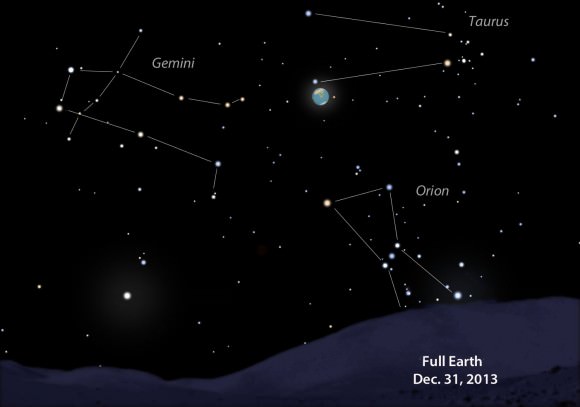
Yutu and the lander will see the sun drift to the west while Earth moves east, rises higher in the lunar sky and putting on the pounds phase-wise. Today Earth’s glides across the border of Sagittarius into Capricornus. The next Full Earth happens on New Year’s Eve when the sun is directly opposite the Earth in the lunar sky.
Full Earth always happens around local midnight or about one week before sunrise during the long lunar day. On the moon the sun is up for about two weeks and then disappears below the horizon for another two weeks before rising again. At Full Earth time, the sun remains hidden around the lunar backside. When the nights are blackest, the bright ball of Earth spreads a welcome blue glow over the desolate landscape.
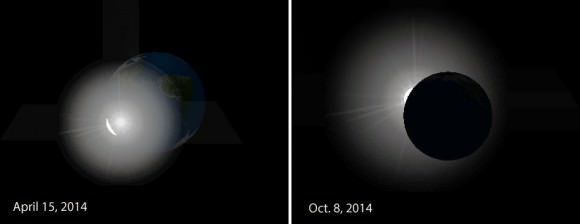
Things really get interesting during lunar eclipses when the moon moves behind the Earth into the planet’s shadow. The next one’s on April 15, 2014. Here on the ground we’ll see the moon gradually munched into by Earth’s shadow until totality, when sunlight from all the sunrises and sunsets around the rim of the planet are refracted by the atmosphere into the shadow, coloring the moon a coppery red.
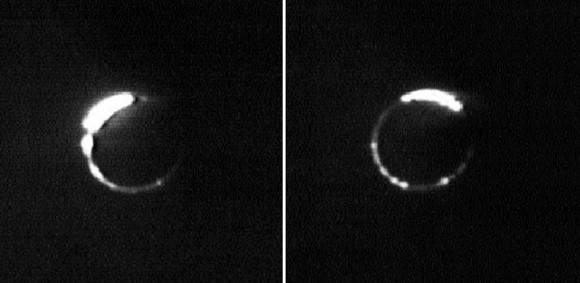
Yutu will see just the opposite. Looking back toward the Earth from inside its shadow, the rover will witness a total eclipse of the sun by the Earth. If by some wonder the Chinese are able to photograph the event, we’ll see photos of the black ball of Earth rimmed in red fire from sunset and sunrise light refracted by our atmosphere. My interpretation using sky mapping software only hints at the wonder of the scene. Beijing Aerospace, if you’re reading this, please make it happen.
Earth eclipses the sun filmed by Japan’s Kaguya lunar orbiter. There are really two eclipses here – the Earth eclipsed by the limb of the moon at the video’s start followed by the solar eclipse.
On two other occasions, our robotic emissaries have photographed solar eclipses from Luna. NASA’s Surveyor 3 snapped a couple crude pictures of the April 24, 1967 eclipse from inside a crater in Mare Cognitium, the Sea that has Become Known. Japan’s orbiting Kaguya probe did the job much more eloquently on video during the February 9, 2009 penumbral lunar eclipse. In a penumbral eclipse (seen from Earth) the moon misses Earth’s dark inner shadow called the umbra, passing only through the outer penumbra, but because the Earth is three times larger than the sun (seen from the moon), it easily covered the sun completely in the complementary total solar eclipse.
And the best thing about watching eclipses from the moon? Guaranteed clear skies!

